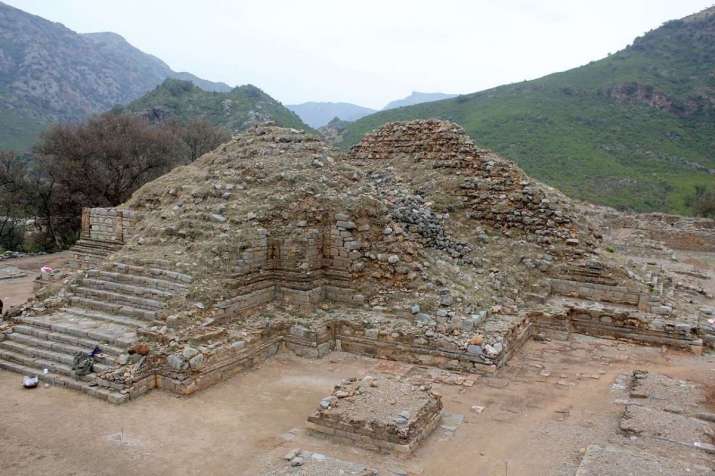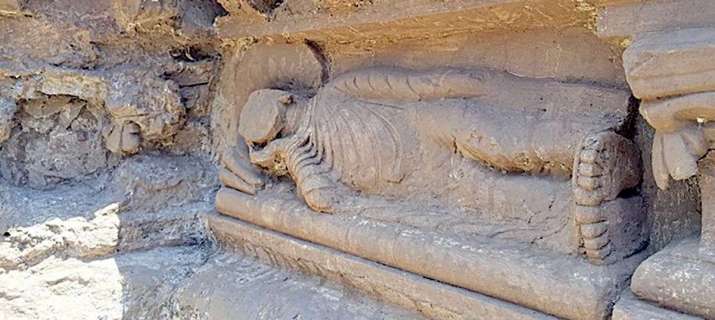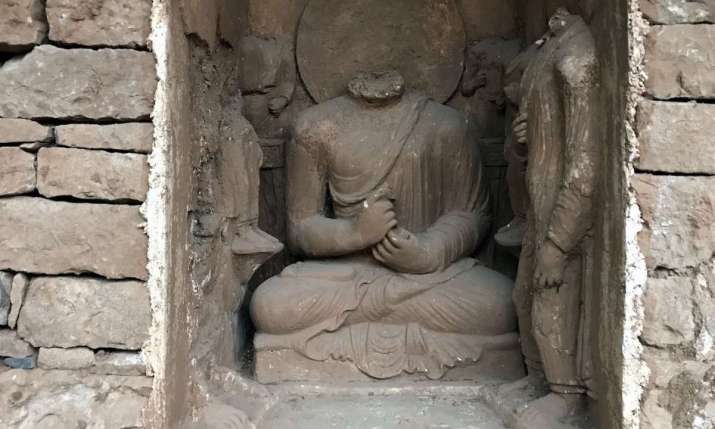NEWS
Pakistan Unveils 1,700-year-old Reclining Buddha Statue at Bhamala Archaeological Site
 Bhamala Stupa viewed from the north. From wikipedia.org
Bhamala Stupa viewed from the north. From wikipedia.orgReflecting a diverse and ancient heritage far removed from the country’s image in mainstream media, Pakistan on Wednesday unveiled what it describes as a 1,700-year-old statue of a “sleeping” Buddha.
Part of a program to promote tourism and religious harmony in the Muslim-majority nation, the announcement took place at the Bhamala Buddhist Complex, an archaeological site in the Haripur District of Pakistan’s northwestern Khyber Pakhtunkhwa Province, attended by government officials and foreign diplomats, and presided over by opposition leader Imran Khan. Bahmala is perhaps best known as home to the 4th century cruciform Bhamala Stupa, a National Heritage Site.
Media reports of the unveiling did not feature images of the statue, described as the oldest known example of its kind in the world.
“This is from the 3rd century CE, making it the world’s oldest sleeping Buddha remains,” said Abdul Samad, director of Bhamla’s archaeology and museums department. “We have discovered over 500 Buddha objects and this 48-foot [14.6-meter] -long sleeping Buddha remains.” (Reuters)
Buddhism first took root in what is now Pakistan some 2,300 years ago, when the region was once the center of a Buddhist civilization that took root under the rule of the Mauryan emperor Ashoka, leaving an abundant archaeological legacy of art and architecture. The Gandharan civilization, which flourished from the 6th century BCE–5th century CE, is credited with creating the first carved images of Shakyamuni Buddha in stone, stucco, terra-cotta, and bronze, most of which were enshrined in monasteries and stupas in the region.
 A smaller version of the "sleeping" Buddha at Bhamala. Photo by Amber Rahim Shamsi. From scroll.in
A smaller version of the "sleeping" Buddha at Bhamala. Photo by Amber Rahim Shamsi. From scroll.in“It’s a world heritage site [and] because of it people can come for religious tourism and see these places,” said Khan, noting that the preservation of sites such as Bhamala could encourage religious tourism to Pakistan and project a more tolerant image of the country. “The majority of the population wants to see such [Buddhist] sites restored,” he added. (Reuters)
The reclining Buddha is a major iconographic image in Buddhist art and symbolism, representing the historical Buddha before his death, about to pass into the state of parinirvana. Shakyamuni Buddha is usually depicted lying on his right side, with his head supported by a cushion or resting in his right hand. This widespread image is believed to have originated at the same time as other representations of the Buddha in the Greco-Buddhist art of Gandhara.
As the leader of the country’s opposition party, Khan has long placed an emphasis on dialogue with hardline factions, including the Taliban. “It’s a question of preserving these heritage sites which are an asset for our country,” he observed. (Reuters)
Data for 2010 from the Washington, DC-based Pew Research Center indicates that 96.4 per cent of Pakistan’s population identifies as Muslim. According to Pakistan’s National Database and Registration Authority, an independent government agency, there were just 1,492 registered Buddhists in the country as of 2012.
 Other sculptures discovered at the Gandhara-period archeological site. Photo by Saad Sayeed. From reuters.com
Other sculptures discovered at the Gandhara-period archeological site. Photo by Saad Sayeed. From reuters.comSee more
Pakistan unveils 1,700-year-old sleeping Buddha, evoking diverse heritage (Reuters)
In Pakistan, nobody’s losing sleep over the poor state of an 1,800-year-old Buddha statue (Scroll.in)
Imran, diplomats visit archaeological site near Khanpur (Pakistan Observer)
Related news from Buddhistdoor Global
First exhibition of Gandhara Buddhist Antiquities Opens in South Korea
Buddhist Monks Praise “Hospitality, Love, and Respect” from People of Pakistan During Vesak Observation
Restoration Workers Tamper with Orginal Buddha Sculptures at Bhamala Buddhist Complex, Pakistan
7th Century Buddha Image in Pakistan Restored Nine Years After Islamist Desecration
Layers of Indo-Greek City Discovered in Swat Valley, Pakistan
Related features from Buddhistdoor Global
Diplomacy, Heritage, and Cultural Pride: Reviving the Buddhist Legacy of Islamic Pakistan
The Nostalgia of 2,500 Years: Celebrating South Asia’s Buddhist Heritage














